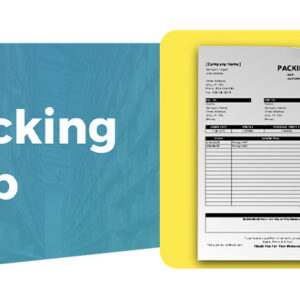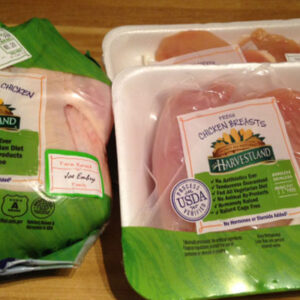Are you a baker? Do you know how much is one package of yeast? If not, you’re in for a treat. You can learn all about yeast and how much is in each packet in this blog post. The need to wonder will thus never arise again.
Many varieties of bread contain yeast as a key ingredient. Yeast enables the bread to rise, which in turn contributes to its airy texture. 7g of yeast are found in one package. Let’s discuss everything pertaining to yeast, everyone!
Table of Contents
What is Yeast?
You might be wondering what yeast even is if you’re new to the world of bread baking. Many bakers are unaware of what yeast is, despite the fact that most people have heard of it and are aware of its crucial role in bread. Quickly, let’s talk about it.
Yeast is a live, single-celled fungus that can only be observed under a microscope. Yeast has two functions when it is used to make bread: it ferments sugars and releases carbon dioxide. The dough rises as a result of the expansion of gasses within it.
Yeast not only helps your bread achieve the ideal flavor and texture, it also ensures that it rises as it should. Therefore, don’t skimp on the yeast if you want a slice of bread that is light and fluffy.
Types of Yeast
Wine yeast, brewer’s yeast, nutritional yeast, and baker’s yeast are the four main varieties of yeast.
Baker’s yeast is the variety used in baking. To learn about all the different types of baking yeast, however, keep reading!
Dry Yeast
Active Dry Yeast
Manufacturers drain the water from living organisms to create active dry yeast.
This procedure creates fine granular yeast, which you can buy in packets or small glass jars for use in homebrewing your own recipes with organic ingredients.
The dormant state of active dry yeast lasts until it is dissolved in a small amount of warm water at 110 degrees F/43 degrees C.
You should always read the instructions on the package. For instance, some brands ask for sugar to be added at the same time as the yeast.
When combined with other ingredients, it will cause the dough to rise.
Note: Before using active dry yeast, make sure to always check the expiration date. Even after this step, there is still a chance that the yeast’s potency will change, leading to uneven baking results.
Instant Dry Yeast
Another type of dry yeast that has been around since the 1970s is instant yeast. It is created using the same process as active dry yeast, except it is dried more quickly and milled into very small particles.
It dissolves and works more quickly because this type of yeast is more delicate. Furthermore, instant yeast can be mixed with dry ingredients without first needing to activate it in water.
This type of yeast can be frozen for several years of storage and is extremely stable, tolerating temperatures up to 130 degrees F/54 degrees C.

Fast-acting Instant Yeast
It is instant yeast (a subtype of instant yeast) that has been milled into smaller granules and doesn’t require activation in water.
Additionally, it has additives and some enzymes that help the dough rise more quickly.
By using fast rising yeast, you can shape your bread after kneading and omit the first rise. For use with just one rise, this yeast was specifically created.
Instant yeasts that rise quickly include Red Star’s Quick-Rise and Fleischmann’s RapidRise.
Bread Machine Yeast
The instant dry yeast used in bread machines doesn’t require activation before use.
It is made to be used with bread machine recipes.
Cake Yeast
Cake yeast, also referred to as fresh, wet, or compressed yeast, differs from dry yeast in that it is created as a solid block.
In the United States, one fresh yeast cake weighs 2 ounces (57 grams). and 1.48 ounces (42 grams) in Europe.
It should be refrigerated to preserve its leavening qualities as it has a shorter shelf life due to its high moisture content.
Before incorporating it into the dough ingredients, fresh yeast should be dissolved in warm water or milk.
Due to its robust flavor compared to dry yeast varieties, professional bakers prefer to use this type of yeast.
How Yeast Works?
Once the yeast has been incorporated into the dough, the sugars that are there are ingested by the yeast cells, who then transform them into ethanol and carbon dioxide (CO2). Fermentation of alcohol is the name of this procedure.
Bread is internally inflated by carbon dioxide, which occupies space. It forms bubbles (the “holes” in the crumb of the bread).
Don’t forget about the gluten either, which creates an elastic net in the bread dough. Therefore, kneading the dough enables gluten development.
Since the bread is a closed medium, CO2 released from the yeast cannot escape during baking. It is drawn to the bread’s surface as a result of its surface.
The gluten net is under pressure, which causes the dough to expand. The bread dough will rise more effectively the more yeast and sugar it contains. Do you recall the puffy brioches sold in the bakeries?
How Much Yeast is in a Packet?
Typically, yeast is sold in a packet when you buy it. Three packets are frequently offered for sale as a set. ¼ ounce, or seven grams or two ¼ teaspoons, is the amount of yeast that is contained in each packet.
Most bread recipes call for one packet of yeast, or slightly less, even though this varies by recipe. A great option if you do a lot of baking is to purchase yeast in jars or bags. However, packets of yeast are frequently the best option because there is no need to worry about moisture getting inside and harming the yeast.
Related Reading: How Many Oreos Are In A Pack?
How Many Packets of Yeast Do You Need for Baking?
First, if you are a novice baker, I wouldn’t advise modifying the recipe’s amount of yeast.
Second, if you have baking experience, you are probably aware of the significance of the yeast to flour ratio.
Generally, one packet of active dry yeast should be used with one pound of flour, which equals about 4 cups or 454-500 grams of flour.
As for fresh yeast, you should use 0.6 ounces (17 grams) of it for 4 cups of flour.
Less yeast is generally preferable to more yeast when making dough.
Too much yeast in the dough affects the baked bread’s quality.
First, because the CO2 was produced quickly, it is possible that the bread will have irregular holes. Even worse, the bread might fall apart.
Second, the bread might taste and smell like yeast.
The dough will rise slowly if you use less yeast than called for in the recipe, but according to home bakers, the bread tastes better when the dough rises more slowly.
How to Proof Or Activate Dry Yeast?
If your yeast is still viable, there are two ways to determine this.
The first one entails using an expiration date on the package to show when it was created and when this product should be used for the best outcomes.
If your packet of yeast is open, there is also a yeast activity test that doesn’t require any dating procedure at all. Stir one packet of dry yeast, then wait 10 minutes.
A foamy yeast mixture that has risen to the level of 1 cup and has a rounded top indicates that the yeast is active.
It means you can use the yeast in your recipe because it is healthy and functional.
How to Store Yeast?
Unopened yeast sachets should be kept out of direct sunlight and extreme temperature changes in a cool, dry location.
Remember that active dry yeast is highly perishable. Because of this, it is important to always check the expiration date before using.
Even if the active yeast hasn’t yet expired, it is strongly advised to conduct a yeast activity test to make sure it is still alive.
Active dry yeast envelopes should be opened and kept in the refrigerator or freezer in an airtight container.
In an airtight container in the refrigerator or freezer, keep the opened instant yeast, including Fleischmann’s yeast and bread machine yeast.
To maintain its potency, cake yeast must always be kept in the refrigerator. It can be frozen for up to three months or kept in the refrigerator for up to two weeks when stored in an airtight container.
How Do I Know If My Yeast is Still Good?
If it’s past the “best by” date, it can be difficult to decide whether or not to use your yeast. If it still functions, you don’t want to throw it away, but you also don’t want to go to all the trouble of making a loaf of bread only to find out that it didn’t rise in time for dinner.
You can avoid both of these problems by testing your yeast:
- ¼ cup of warm water, one teaspoon of sugar, and one packet’s worth should be combined.
- Prior to checking the height of the foam, give it 10 minutes to sit.
- If it hits the ½ cup mark, it is still good.
You can still try it out even if it’s not quite as foamy as you had hoped, provided it’s not for a crucial situation. Sometimes, older yeast just takes longer to rise. So, if you’re up for it, give it a shot!
If making something with eggs and lots of sugar, you might want to abandon hope and find a fresh jar or packet. It takes more strength for that kind of dough to rise.
FAQs
How Many Teaspoons Are in a Packet of Yeast?
Each packet (also known as an envelope in some recipes) contains 2 ¼ teaspoons of yeast. The quantity inside won’t change depending on the type of yeast. There are exactly the same number of teaspoons of yeast inside all types of yeast, including instant rise and active dry.
What is 1 Gram of Yeast in Teaspoons?
If you ever need to know how many teaspoons are in one gram of yeast, the conversion factor is 0.35. Knowing this can be helpful, especially if your recipe specifies it. Keep this information handy for baking!
How Many Yeast Cells Are in a Packet?
Although a yeast packet contains 2 ¼ teaspoons of yeast inside, that is not the number of yeast cells in a packet. It’s pretty amazing how many yeast cells there are inside a typical yeast packet—an astounding 69 billion.
How Long Does Yeast Packet Last?
Always check the yeast’s expiration date on the packet. If stored properly, active dry and instant yeast has a two-year shelf life. Perform the yeast activity test before using it, if necessary.
How Much Yeast is in a Fleischmann Packet?
About 2-¼ teaspoons.
How Much is 1 Yeast of Packets in Cups Or Tbsp?
Approximately 7 grams (¼ ounce), or about 2 ¼ teaspoons (¾ tablespoon) fill each one, and they are often sold in packs of three. Typically, recipes call for one packet, occasionally even less.
How Much Yeast is in a 3 Pack?
They frequently come packaged in a set of three separate packets. What is this? Each individual yeast packet is 1/4 ounce (7 grams) or 2 1/4 teaspoons of yeast. You can also use 3/4 tablespoon to equal one packet of yeast.
Final Words
Yeast is necessary when making bread. The amount of yeast in each packet is the same, or 2 ¼ teaspoons for all varieties of yeast.
The yeast is typically sold in three-packs at supermarkets. These packets are simple to use and keep in storage.
If you have any queries regarding the quantity of yeast in a packet or anything else related to using yeast, kindly leave a comment.





